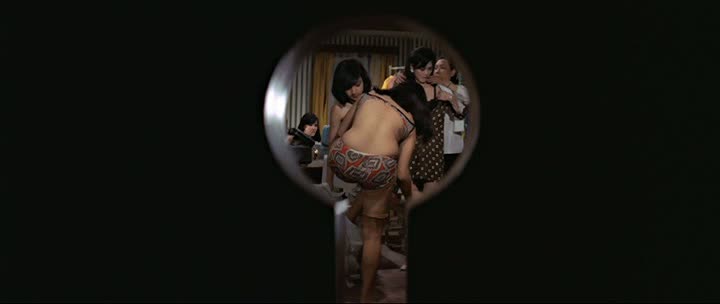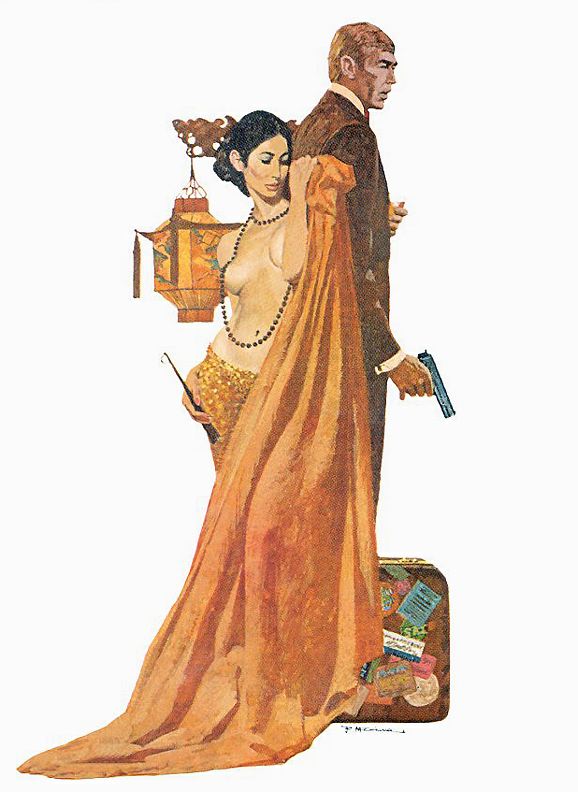 |
 Jane Bond! (Hong Kong spy cinema) Jane Bond! (Hong Kong spy cinema)"Jane Bond" is the codename for movies about female secret agents made in Hong Kong during the 1960s. A uniquely Hong Kong film genre, the Jane Bond films are a delicious blend of spy flicks, jewel-thief films, martial arts movies, youth films, detective pictures and comic books. Emerging in the late 1960s and highly popular, they feature young women in adventures full of cartoon-style action, intrigue and men-kicking fights. The genre drew on precedents in Shanghai cinema of the 1940s, while also demonstrating the influence of the '007' craze on Hong Kong popular culture, as well as famous heist films such as Rififi (1955).  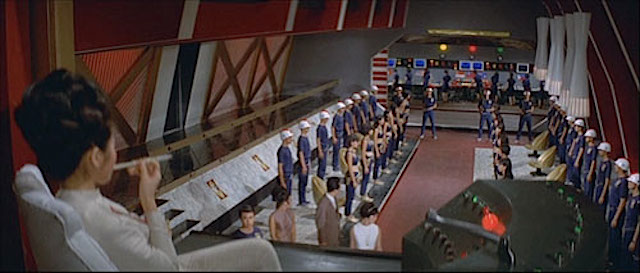
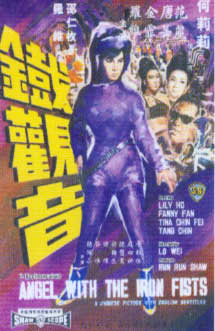 The Angel with the iron fists... The Angel with the iron fists...Okay, her fists belong to a male stunt man...
ANGEL WITH THE IRON FISTS (1967) is a Mandarin production that features Lilly Ho, best known for her role in INTIMATE CONFESSIONS OF A CHINESE COURTESAN, as a lady super spy ranked Agent 009. Director Lo Wei, who helmed Bruce Lee's first two martial arts movies, makes a nondescript appearance as Lily's boss. He sends her to infiltrate a secretive criminal organization known as the Dark Angels. Their aim, besides the usual murder of undercover agents and general villainy, is to engineer and distribute an age-reducing drug that will further fund their nefarious schemes. Once Tina Chin Fei arrives on the scene, resplendent in her white catsuit and gold go-go boots, the film takes off into sci-fi territory. Production values are noticeably more sumptuous compared to other HK spy movies resulting in lavish, Ken Adam-style space-age sets, better choreographed fights, although there are a couple in which she is obviously doubled by a man in a ninja suit. 
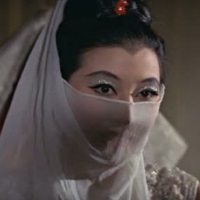 The Temptress! The Temptress!in Temptress of a Thousand Faces... This sexy Shaw Brothers crime caper has influences from the classic female-lead action films of yore, the 1960s Jane Bond films, James Bond, Eurospy, and even Fantomas! TEMPTRESS OF A THOUSAND FACES (1968) meshes these sources all together into a terrific crime caper. One of those films where there are master thieves who can be anywhere and disguised as anyone. Even your mom! Okay, probably not your mom. Or is that just what they want you to think? You better call your mom an make sure, just in case. It’s the old master of disguise story, but with no need to worry about people being turtlely enough to join the turtle club. Because none of them are! Freaking lack of turtle love in Temptress of a Thousand Faces… The big switch is this time the thief is a woman. The thief being female throws the entire police force for a loop, as everyone is looking for a male master thief. I’m not sure why, almost every crime shown involves women, maybe the police have all taken stupid pills. It’s girl power, but only sort of. Of course, only another woman can take her down. Further continuing the gender bending, the police officer hero is the female Ji Ying, while her boyfriend Yuk Dat plays the Torchy Blane role of reporter who is on the case. But unlike Torchy, Yuk Dat doesn’t contribute to the solving of the case, just becoming yet another chess piece to be played by the mastermind and the detective.
Temptress of a Thousand Faces has examples of the media influencing the villain. It’s interesting to see how the news before the 24 hour news cycle and the internet worked, and how that still produces media heroes. Of course, that’s not entirely new, there has been media criminal superstars since at least Charles Starkweather and Lizzie Borden. But it is still fun to see it play out the old school way, to see newspapers holding sway instead of just being a paywall that bloggers lift stories from (with a sentence or two of “commentary”), or a source of thousands of snarky jokes on Twitter that trivialize whatever tragedy is currently captivating the planet. Temptress is the master thief that is terrorizing the rich inhabitants of the city. So brazen, she even leaves a calling card at her heists! Temptress empties vaults, impersonates rich women, leaves disappearing (and flammable!) ink on checks, and basically drives the police batty. Ji Ying directly challenges Temptress on television, the media exposure sparking Temptress’s interest in her. And like a kid with a new toy, Temptress has to take it out to play. Kidnapping Ji Ying, openly threatening her, a peacock-like display of her power. No one puts baby in the corner, nor puts Temptress in her place on TV! The entire film is a mix of fantasy and reality from the animated opening to the world of high crimes. Temptress is constantly under disguise and no one is who they seem to be. Combine that with the fantasy world of extravagance and the quality cinematography of Shaw Brothers, and you get an atmosphere that seems surreal. The secret lair of The Temptress is a trippy dreamworld of psychedelic 60s excess insanity, an amazing place that is like James Bond humped Dr. Seuss and splattered babies all over the wall. It’s an underground lair with dancing ladies all around, guards dressed in black, and the Temptress clad like a Persian princess with her face partially obscured by a veil (ever mysterious!) Temptress smacks Ji Ying around and then spin her dizzy until she wakes up in her apartment. It seems so much like a dream, and is so trippy weird that had Temptress not given her a ring as proof, no one would have believed. I still don’t believe her, but then I have trust issues… The lines between fantasy and reality get more blurred the closer Ji Ying gets to Temptress’s world. Temptress even kidnaps Ji Ying again and replaces her, setting out to ruin her life, frame her as a criminal, and make her man be unfaithful. At one point both real and fake Ji Ying battle it out, hapless Yuk Dat paralyzed by confusion. 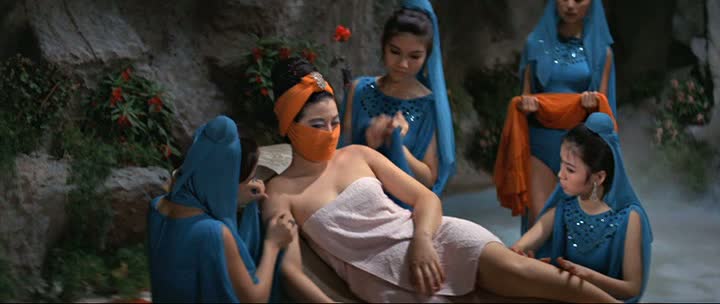
Temptress is a strong woman who can do whatever she wants and makes powerful people dance around her. Her female empowerment is a result of her revenge fantasy against the rich and powerful men who used her as a plaything. She sees the men as criminals that don’t get caught because of their status and bank accounts (and to be fair, she’s right about some of them!) Despite all their resources, Temptress has complete control over these men, and she can only be undone by a fellow female. But even Ji Ying calls in the cavalry, and the Temptress ultimately falls at the hands of men. After all, we can’t have women being all powerful and not have them be destroyed for daring to dream!
The female empowerment angle is only there as a not-to-subtle subtext, because Temptress of 1000 Faces is still exploitation cinema in its heart. The film is filled to the brim with upskirt shots, crotch shots, shots focusing on the chests of the ladies (especially the dancing lady at the club), women running around half-naked, and chick fights. The sexualized girl power films of the late 60s and early 70s deserve a closer scrutiny, too bad several of them are very hard to find. Hopefully that will be rectified some day in the near future. For now, Temptress of 1000 Faces is a fun crime ride with amazing visuals and enough action packed it to make it appealing to a broad audience. It is a film that deserves a far bigger fan base than it has, so get started becoming a fan!
Do be warned: I counted, there was way less than 1000 faces!
Loaded with kink and anarchy - and set to a furious pace that both obliterates and makes redundant the need for coherence - it's a perfect example of the type of cinema experience that leaves you no choice but to simply let it wash over you. Furthermore, with it's focus on the heated and sexually charged conflict between two ass-kicking female leads, it's not only a precursor of the "Girls With Guns" HK films of the early 90s, but a virtual model for the frenetic violence and explosive Sapphic shenanigans of one of the gloriously trashy touchstones of that genre, Clarence Ford's 1992 Naked Killer. Since splashy style, riotous mod era design and latent lesbianism all freed from the constraints of coherent storytelling are pretty much my bread and butter, it should come as no surprise that this one is a favorite of mine. The film centers on the exploits of a shrewdly self promoting mistress of disguise, The Temptress of a Thousand Faces, who has captured the public imagination with a series of daring robberies. Seemingly eager to control her public image - and to perhaps prevent the media from saddling her with a less tongue-tripping appellation (seriously, try shouting that name in alarm the way so many character in this movie do so frequently) - she helpfully leaves a business card at the scene of each crime, and in one case presents a forged check with a signature that, once she has made her getaway, magically transforms to announce her true title before the check itself bursts into flames. Severe-yet-stylish-and-also-super-cute lady police detective Ji Ying (Tina Chin Fei), seeing the Temptress as a threat to the stability of society itself, makes a television appearance to denounce the arch villainess, which appears to somehow raise the Temptress's ire instantaneously. (In a perfect example of Temptress's dedication to breathless pacing over narrative logic, a crowd watches Ji Ying's statement on a stack of televisions displayed in the window of an electronics shop which, for no visible reason, erupts in a massive explosion the second the broadcast ends, an event that is never referred to once we've quickly moved on to the next scene.) Later that evening, after receiving delivery of a drugged rose, Ji Ying finds herself making the first of a long series of involuntary visits to the Temptress's secret lair. The Temptress's cavernous subterranean lair, cartoonishly artificial, filled with outlandish props and bathed in lots of fog and Bava-esque colored lighting, is exactly the kind of set that Shaw Studios excelled at during its heyday - and it was undoubtedly reused as the lair of some sinister clan or other in one or more of their later martial arts movies. The Temptress, taking the decorative approach to human resourcing, has populated this spacious piece of super-villainous real estate with a retinue of veiled handmaidens, a small army of masked ninjas, and a number of machine gun toting female guards in black biker shorts. It is here that Ji Ying first finds herself at the mercy of the Temptress - and recostumed in a flimsy negligee for the occasion. The Temptress first puts her through her paces, giving Ji Ying a chance to display her formidable kung fu in combat with the assorted ninjas and guards. Then it's time for some torture of a not entirely clear nature, involving spinning around really fast in a big glass chamber with flashing lights and sparks. (It certainly looks uncomfortable, but the agonized grimacing of its subject seems to imply that, beyond looking really cool, it's potentially lethal.) Though it's elsewhere made clear that the Temptress has no qualms about killing folks who get in her way, she's content to let Ji Ying off with a warning, leaving open the option to again kidnap her and subject her to further abuse. In fact, as the movie progresses, it seems that the committing of daring robberies has moved down a couple of points on the Temptress's agenda to be replaced by the mandate to abduct and torment Ji Ying at every possible opportunity. Of course, by this point, it is not just Ji Ying, but also Ji Ying's lunky hunky boyfriend Yuk Dat who has become the object of the Temptress's obsession. And with that triangle established, the rest of the movie unfolds like a Jerry Springer catfight absurdly played out on the scale of grand action spectacle. The Temptress caps off her final imprisonment of Ji Ying by forcing her to watch via hidden camera as she, disguised as Ji Ying, seduces and makes love to Yuk Dat in his apartment. Of course, Ji Ying isn't one to react to such incursions passively and - no sooner than you can say "Oh no she di'int" - has, at the expense of many ninja lives, made a rage-fueled, lingerie-clad jailbreak and is zeroing in on the Temptress with payback in mind. Like the other Shaw Brothers "spy" films mentioned up top, Temptress of a Thousand Faces is not, by nature of its story or setting, an actual spy film, but it has all of the trappings associated with those type of films of its era. In addition to the Temptress's fortified hidden lair and super-scientific implements of mayhem, we're treated to exploding compacts, trap doors, leering sexism, narrow escapes through secret passages, exotic girls dancing to surfy lounge music, and even pilfered bits of John Barry's score from You Only Live Twice (a film that a couple of sequences in Temptress owe a particular debt to). But the sixties spy movie trope that is most central to the film is the method of disguise employed by the titular villain, that great old Mission Impossible gag in which a clunky rubber mask magically assumes the texture and appearance of human skin once patted down onto the face, transforming the wearer, regardless of bone structure or body type, into the exact likeness of one of the other characters. Keep in mind that the Temptress's disguise as Ji Ying has to bear up to some very intimate scrutiny and you'll get a sense of just how far this already ridiculous scenario is pushed. What sets Temptress apart from the other films mentioned, however, is the total extent to which its action is driven by its female characters. Even in the Angel With the Iron Fists films, the female hero is provided with a male co-star to help with the heavy lifting, but not here. The male love interest, Yuk Dat, is squarely placed in the traditional female role of lust object and imperiled victim, and, in a gender-reversed take on the third act business typical of these films, it's the need for Ji Ying to effect his rescue that sets the climax in motion. Interestingly, Yuk Dat is only able to move the action forward himself by dressing in female drag, as he does when he impersonates the Temptress to clear Ji Ying of a crime she's been framed for. Temptress was directed by Chang-hwa Jeong, who is probably best know for directing King Boxer, aka Five Fingers of Death. Not surprisingly, it's a solid action film, loaded from start to finish with furious, multi-person fights and fast paced chases. Handily fulfilling both of the movie's primary objectives, Jeong films these sequences in an exciting manner while always managing to shoot the mini-skirted female participants from an angle designed to please the panty fetishists in the audience. He also shows a real eye for strikingly stylized compositions and lens-popping color, making Temptress a pop art cinematic comic book that is, if not in the same league of Danger: Diabolik, at least in the same field. That Temptress can contain the clashing combination of slick style and mild sleaze referred to above is not that mean of a feat. Like a lot of Hong Kong cinema, it has it's share of conflicting tones (including some extremely broad slapstick), but manages to blend these better than most, glossing over its inconsistencies by way of sheer velocity. When it grinds to a halt at the end with an instance of painfully unfunny sexual comedy, you really see this made plain. The moment jars not because it is the film's most outrageous (it probably isn't), but because it occurs at a moment when the film has finally stopped to take a breath, thus giving you the opportunity to savor just how stank it is. That aside, Temptress of a Thousand Faces is a crazy, shiny object that stands out for me from an era and genre filled with crazy, shiny objects - one that, over the years, I have been pleased to repeatedly take from its box and twirl between my fingers. Seek it out and enjoy. 
 Don't mess with Don't mess with Lady Bond (Connie Chan Po-chu) THE RETURN OF LADY BOND (1966) Ages 15+ DIGITAL BETACAM, BLACK AND WHITE, STEREO, 102 MINUTES, HONG KONG, CANTONESE (ENGLISH SUBTITLES) / DIRECTOR: MOK HONG-SEE Another highly popular entry of the genre, featuring choreographed action staged in the name of fighting social injustice. The film stars the youth sensation Connie Chan Po-chu, the most beloved Jane Bond of them all. Connie Chan Po-chu was born in 1946 to impoverished parents, one of at least nine siblings, in Guangdong, China. To increase their children's chances of survival, Chan's birth parents gave away some of their youngest to other families. As a result, Chan was adopted by Chan Fei-nung and his wife, Kung Fan-hung, who were renowned Cantonese opera stars. During the 1960s, Connie Chan was one of Hong Kong cinema's most beloved teen idols. She made more than 230 films in a variety of genres: from traditional Cantonese opera and wuxia movies to contemporary youth musicals; action films to comedies; melodramas and romances. Owing to her popularity she was dubbed "The Movie-Fan Princess". Her godfather is actor Cho Tat Wah. She has a son named Dexter Yeung, who stars in the 2008 TVB Series Wasabi Mon Amour and Moonlight Resonance.
Lady Bond aka Chivalrous Girl
1966
starring: Connie Chan
The Lady Bond series is the answer to James Bond. None of the films are available on DVD as of this writing.
There are three followups in this series
The Return of Lady Bond (1966), The Flying Killer (1966)
Directed by Mok Hon-si
Starring Connie Chan Po-chu, Lydia Shum Din-ha and Sek Kin
Another entry in the Lady Bond series.
Lady in Distress: The Invincible Fighter (1967)
director Mok Hong-See
starring Connie Chan Po-Chu, Lui Kei, Tam Bing-Man, Sek Kin, and Yue Ming.

So Ching made four Jane Bond films for Mingxing film company:
Gold Button (1966), The Golden Gun (1966), The White Swan (1967), and Pink Bomb (1967)
All four films co-starred Cantonese cinema’s all-purpose leading man Wu Fung, Fanny Fan (who had just reignited her sex bomb image in Shaw Brothers’ The Golden Buddha), and Cathay hunk Roy Chiao Hung (who was branching out into Cantonese films). Gold Button features mysterious star So Ching and shows off some of the James Bond spy influences that helped shape a good number of the Jane Bond films. We have such wonderful things as doomsday weapons, an all-powerful secret gang, female agents, gunfights, punching, gangs of girls in swimsuits, dozens of nameless henchmen, a masked boss of the evil gang, spy gadgets, a film named after a flower/characters named after a flower, and stolen theme music (including the James Bond theme!) Things get a bit more sleazy than the female-audience targeted Connie and Josephine flicks. Fanny Fan is naked in the back, while female characters are forced to disrobe and threatened with rape, and we see undies tossed on the floor. But even the sleaze is held back, the women wear one-piece swimsuits instead of bikinis! I am not sure if Mingxing Film Company is imitating 1966′s Golden Buddha with the extra sexiness, or if these films began production before Golden Buddha and it is ramping up things for another reason. Gwan Jing-Leung did the stunt work, and Wong To produced. http://tarstarkas.net/2012/02/gold-button/

THE BLACK ROSE (1965)
Director: Chor Yuen
Cast: Connie Chan, Nam Hung, Patrick Tse Yin
In the sequel, Chor Yuen became more indulgent with 007-style gadgets and gimmicks. The chic outfits were delectable, but it failed to evoke the same kind of sentimental feelings as its predecessor. Spy with My Face 1966 Ages 15+
Sun 25 Jul 1.00pm / Cinema A
DIGITAL BETACAM, BLACK AND WHITE & COLOUR, STEREO, 102 MINUTES, HONG KONG, CANTONESE (ENGLISH SUBTITLES) / DIRECTOR: CHOR YUEN
This sequel to Black Rose further sets the Jane Bond genre on its course. Director Chor Yuen, emboldened by the success of the original, takes the Bond influence up a notch. The arch villain is not just a crooked businessman, but the head of a powerful crime syndicate, lording over an army of thugs while headquartering in a secret hideout equipped with an endless array of high/low-tech devices. Connie Chan Po-chu, with her embodiment of both the fairy Jade Girl and the fierce fighting woman, eclipses Nam Hung as the film’s true star, establishing herself as the Jane Bond prototype.
http://www.illuminatedlantern.com/cinema/archives/the_black_rose.php
MORE CHOP-SOCKY, SPY SHOCKY:
Photo credits (top to bottom): Everett Collection (4), Photofest Music: 60s song sung by Siu Fong Fong and Connie Chan |

 Lily's gadgets include a infrared sunglasses, perfume that sprays knockout gas, a machinegun purse, an exploding wristwatch, and hair-band radio; Lily looks good and the story features a shootout in a hair salon where Lily makes lethal use of assorted beauty products. She went on to star in films like The Brain Stealers (1968), and The Lady Professional (1971). While her award winning career highs were yet to come, Angel with the Iron Fists presents Lily at the height of Sixties glamour, cover girl gorgeous in an array of stylish mod outfits.
Lily's gadgets include a infrared sunglasses, perfume that sprays knockout gas, a machinegun purse, an exploding wristwatch, and hair-band radio; Lily looks good and the story features a shootout in a hair salon where Lily makes lethal use of assorted beauty products. She went on to star in films like The Brain Stealers (1968), and The Lady Professional (1971). While her award winning career highs were yet to come, Angel with the Iron Fists presents Lily at the height of Sixties glamour, cover girl gorgeous in an array of stylish mod outfits.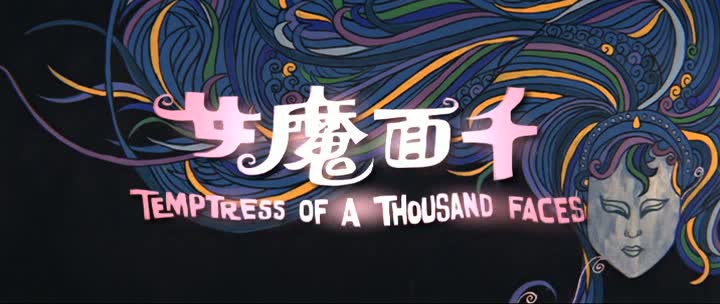
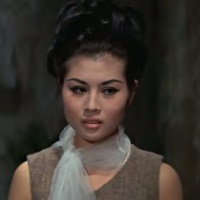 Ji Ying (Tina Chin Fei) – Police office who is expert at fighting while in her underwear
Ji Ying (Tina Chin Fei) – Police office who is expert at fighting while in her underwear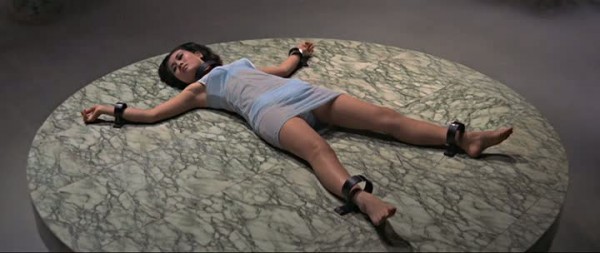
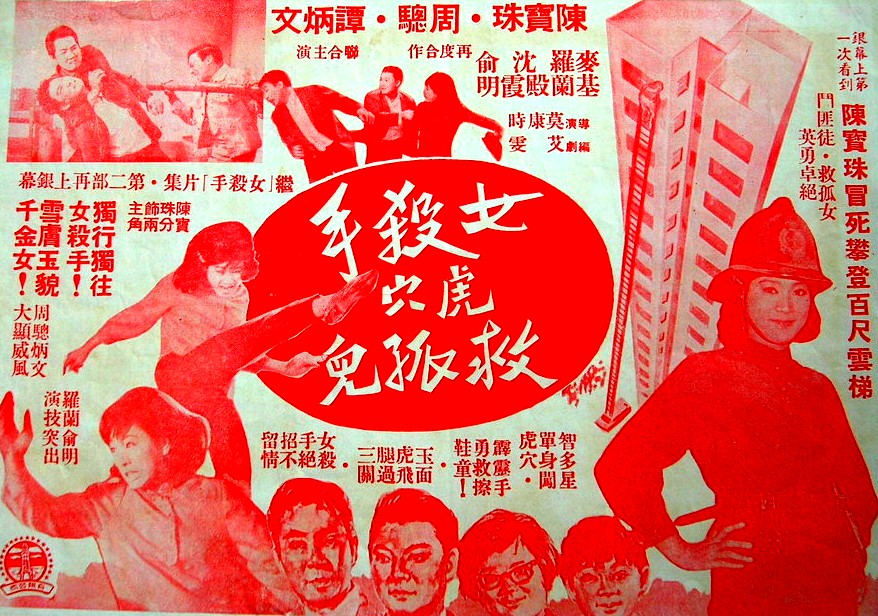
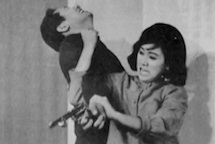 Hong Kong Spy Cinema
Hong Kong Spy Cinema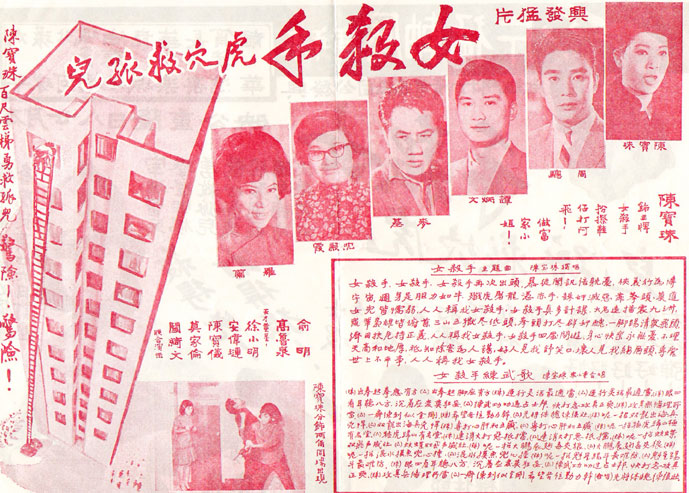
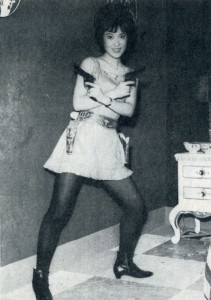 So Ching in Gold Button (1966).
So Ching in Gold Button (1966). Black Rose Nam Hung wearing a white rose (???).
Black Rose Nam Hung wearing a white rose (???).
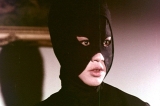 The Spy With My Face (1966).
The Spy With My Face (1966).
